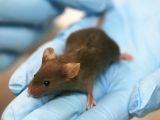The holiday season is over, which can only mean one thing: it's high time to return to our usual routine and get to work keeping tabs on what scientists across the world are up to. Simply put, our Top 10 Coolest Science News of the Week series is back in business.
These past few days have been pretty busy, at least as far as scientific progress is concerned. Discoveries were made and announced in prestigious journals, and once again, it's time to review brainiacs' work. Without further ado, here are this week's best science news and announcements.
10. Beethoven's masterpieces said to follow his arrhythmia
A team of researchers say that, having taken the time to study the rather hectic rhythms of some of Ludwig van Beethoven's best works, the Piano Sonata in A-flat major, Opus 110, and the Les Adieux Sonata included, they found evidence that they likely follow the composer's cardiac arrhythmia.
That's right, these scientists say that, according to their investigations into the matter at hand, chances are that Ludwig van Beethoven was inspired by the hectic beats of his troubled heart when composing some of his greatest and most memorable works.
If this is the case, this means that the pieces are, essentially, musical electrocardiograms. Interestingly enough, the researchers argue that what probably made the composer painfully aware of his irregular heartbeat was the fact that, during the last decade of his life, he was almost completely deaf.
9. Researchers found why it's so easy to catch a cold in winter
Pretty much everybody who is unfortunate enough to live someplace other than a tropical paradise knows that it's way easier to catch a cold in winter than in any other season. According to a recent investigation, this is because the virus that most often causes this health trouble thrives inside cold noses.
In a nutshell, researchers say that, having carried out a series of experiments, they found that, when exposed to temperatures below the core one of the human body, which, by the way, is 37 degrees Celsius (98.6 degrees Fahrenheit), the rhinovirus has an easier time reproducing.
Besides, evidence indicates that, when temperatures drop, the rhinovirus has little trouble overriding the body's defense mechanisms. Since this nasty fellow more often than not enters the body through the nasal cavity, scientists say that the key to avoid catching a cold is to always keep your nose warm.
8. Tomb of ancient, mysterious queen discovered in Egypt
Archaeologists excavating a site in Egypt claim to have come across a tomb that is about 4,500 years old and that apparently belongs to an ancient queen whose existence was never even documented prior to the discovery of this monument not far from the country's capital city, Cairo.
It is understood that the ancient queen laid to rest at this location was named Khentakawess. She is now referred to as Khentakawess III because, before the discovery of her tomb, two other queens who shared her name were documented by archaeologists.
Queen Khentakawess III's tomb is included in an ancient funeral complex that was built to honor Pharaoh Neferefre of Egypt's Fifth Dynasty. Because of this, historians believe that this mysterious queen was once married to the ancient Egyptian ruler.
7. Alcohol poisoning found to kill 6 people in the US daily
A new and rather worrying report released by the US Centers for Disease Control and Prevention says that, each and every day, an average 6 people living in the country die after sipping one too many cocktails or glasses of wine and developing alcohol poisoning.
What this means is that, throughout the course of just one year, alcohol poisoning kills about 2,200 adults in the US. Apparently, it's men who are most likely to develop this condition. Besides, evidence indicates that alcohol poisoning is most common among American Indians and Alaska Natives.
As explained by specialists with the US Centers for Disease Control and Prevention, alcohol poisoning occurs when a person consumes massive amounts of alcohol in a short period of time. The symptoms associated with this condition include a hectic heart beat and trouble breathing properly.
6. Parting with one's iPhone linked to separation anxiety
Having carried out a series of experiments with the help of volunteers, researchers found that, when asked to part with it for various reasons, guys and gals who are especially attached to their iPhone can experience mental and physical trouble commonly referred to as separation anxiety.
More precisely, the scientists who conducted these experiments argue that, if left without their favorite gadget, folks risk experiencing symptoms such as increased heart rate and blood pressure. Because of these physiological responses, they stand to lose their ability to solve certain tasks.
In light of these findings, researchers argue that it might not be such a bad idea to let people hold on to their iPhone even when attending conferences or some other meetings. Otherwise, chances are that they will display separation anxiety symptoms that will negatively affect their performance.
5. Gas bubbles documented rushing out of the Milky Way
Data obtained with the help of NASA's Hubble Space Telescope indicates that two massive gas bubbles are now rushing out of the Milky Way, which is our home galaxy, at a speed of about 2 million miles per hour (roughly 3 million kilometers per hour).
The gas clouds, referred to as Fermi Bubbles because they were first spotted by the Fermi Gamma-ray Space Telescope, each measure a whopping 30,000 light-years in height. Besides, the gas that comprises them has a temperature of about 18 million degrees Fahrenheit (10 million degrees Celsius).
Scientists say that the gas bubbles formed in the aftermath of an eruption that occurred at the center of the Milky Way approximately 2 million years ago. This eruption probably occurred either because of black hole activity or because of a sudden burst of star formation.
4. Signs of alien life found in sedimentary rocks on Mars
Scientists have been looking for signs of alien life on the Red Planet for quite a while now. According to a team of researchers, these signs that everyone has been hoping to find for decades lurk in sedimentary rocks found on the surface of the Red Planet.
Long story short, it appears that some rocks found in Mars' Yellowknife Bay look strikingly similar to terrestrial landscapes that are known to have been shaped by microbes. Hence, it could be that these Martian rocks too owe their rather odd appearance to lifeforms that once populated them.
Mind you, its important to note that the scientists behind this investigation are yet to find actual, bulletproof evidence of ancient life on the Red Planet. In fact, the researchers themselves admit that, to confirm their suspicions, they would have to obtain and analyze samples of Martian sedimentary rocks.
3. Spinal cord implants used to help paralyzed mice walk again
A new generation of implantable devices designed to be attached directly to the spinal cord promise to help treat people who lost their ability to walk following an accident, and even make it easier for doctors to alleviate symptoms associated with neurological disorders such as Parkinson’s.
The devices in question are elastic, which means that, when in the body, they behave very much like living tissue and do not disturb the spinal cord that they are attached to. As explained by the scientists who developed them, the devices serve to deliver electrical impulses and pharmacological compounds.
In a series of laboratory experiments, the devices were used to help paralyzed mice walk again. Thus, it appears that, just weeks after being fitted with such high-tech implants, rodents left paralyzed by spinal cord injuries regained their ability to walk. The next step is to test the devices on human subjects.
2. Mammoth binary system studied in unprecedented detail
The Eta Carinae binary system is located at a distance of about 7,500 light-years from our planet. This week, scientists announced that, with the help of both satellites and ground-based telescopes, they managed to study Eta Carinae in unprecedented detail and gain a better understanding of its anatomy.
They say that this binary system comprises two stars that are both way more massive and brighter than our Sun. Specifically, one star holds about 90 solar masses and is 5 million times more luminous than the Sun. The other packs 30 solar masses and produces 1 million times more light than our parent star.
Once every 5.5 years, the stars come within 140 million miles (225 million kilometers) from each other. When this happens, stellar winds originating from them interact with one another. In a nutshell, gaseous outflow stemming from the smaller star carves a cavity in the outflow of its companion.
What's interesting is that, despite the fact that they now know more about Eta Carinae than they used to, astronomers still cannot say for sure why it was that, back in the 19th century, this binary system erupted twice. Hopefully, future investigations will help sort out this mystery.
1. So-called leap second added to this year's June 30
The coming June 30 will be precisely one second longer than any other day of the year. This extra second, known to the scientific community as a leap one, will be added to June 30 to make sure that the atomic clocks we use to measure time stay in sync with the planet's rotation.
Researchers explain that, for a while now, the speed at which the Earth rotates around its axis has been dropping at a steady pace. The atomic clocks that we rely on to tell us the time, on the other hand, are insanely accurate and neither slow down or pick up speed.
The folks who came up with the idea to add an extra second to a day once every few years explain that, but for this extra second, the Earth's rotation and atomic clocks could get so out of tune with each other that, as far as the hour on the clock in concerned, noon could become midnight.
Once every four years, our calendar also gets an extra day. This additional day makes the year a leap one and is added to February. The reason we add a day to our calendars is that, whereas we think of the year as having 365 days, our planet actually takes 365.2422 days to orbit the Sun.
So, there you have them, the best science news and announcements of the week. To stay informed about what brainiacs are up to these day, be sure to check this page again next Sunday. Another round-up will be waiting for you, as per usual.

 14 DAY TRIAL //
14 DAY TRIAL // 









